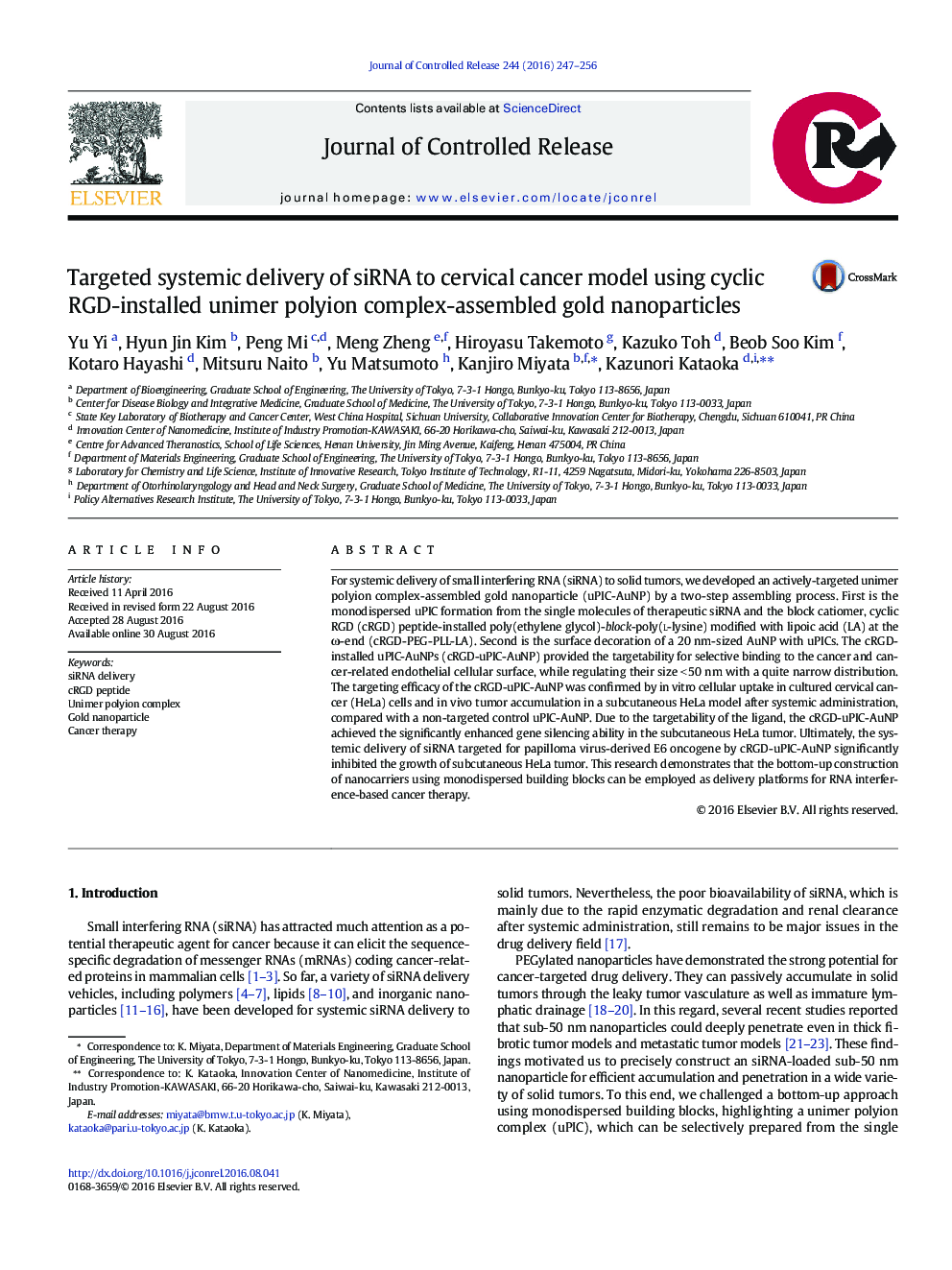| Article ID | Journal | Published Year | Pages | File Type |
|---|---|---|---|---|
| 5434045 | Journal of Controlled Release | 2016 | 10 Pages |
For systemic delivery of small interfering RNA (siRNA) to solid tumors, we developed an actively-targeted unimer polyion complex-assembled gold nanoparticle (uPIC-AuNP) by a two-step assembling process. First is the monodispersed uPIC formation from the single molecules of therapeutic siRNA and the block catiomer, cyclic RGD (cRGD) peptide-installed poly(ethylene glycol)-block-poly(l-lysine) modified with lipoic acid (LA) at the Ï-end (cRGD-PEG-PLL-LA). Second is the surface decoration of a 20Â nm-sized AuNP with uPICs. The cRGD-installed uPIC-AuNPs (cRGD-uPIC-AuNP) provided the targetability for selective binding to the cancer and cancer-related endothelial cellular surface, while regulating their size <Â 50Â nm with a quite narrow distribution. The targeting efficacy of the cRGD-uPIC-AuNP was confirmed by in vitro cellular uptake in cultured cervical cancer (HeLa) cells and in vivo tumor accumulation in a subcutaneous HeLa model after systemic administration, compared with a non-targeted control uPIC-AuNP. Due to the targetability of the ligand, the cRGD-uPIC-AuNP achieved the significantly enhanced gene silencing ability in the subcutaneous HeLa tumor. Ultimately, the systemic delivery of siRNA targeted for papilloma virus-derived E6 oncogene by cRGD-uPIC-AuNP significantly inhibited the growth of subcutaneous HeLa tumor. This research demonstrates that the bottom-up construction of nanocarriers using monodispersed building blocks can be employed as delivery platforms for RNA interference-based cancer therapy.
Graphical abstractDownload high-res image (256KB)Download full-size image
